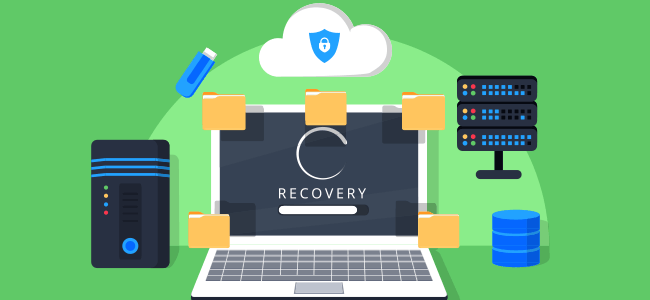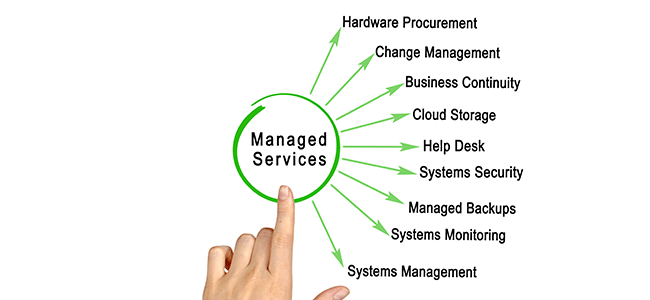
MANAGED IT SERVICES PRICING | 15 MIN READ
Your business isn’t likely generating the kind of income or business Facebook is, but we’re ALL familiar with the product - and while it’s fresh in our minds, most of us are aware Facebook, along with sibling sites WhatsApp and Instagram, suffered an hours-long outage on October 4, 2021.
The cost? Using Facebook’s 2020 revenue as a guide, experts at Fortune and Snopes guess-estimate that the company lost $163,565 - per minute. Total loss estimates land between $60-100 million.
For Facebook, it’s a blow the business can handle; but how much downtime can your business survive? If you’ve never considered that cost, it’s likely time to start, and this is the blog to read before moving forward.
Not sure what managed IT services are? Visit this first: What Are Managed IT Services?
When you get to the end of this article you'll also have an opportunity to download a free IT cost calculator to help you determine which offering is best for your situation.
Not a lot of time? Jump to what you need:
- IT Service Pricing Considerations
- Managed IT Services Pricing Quick Guide
- IT Service Offerings
- Break/fix Managed Services Pricing
- IT Service Pricing Per Device
- Managed Services Per User Contract Pricing
- Managed Services Benefits and Risks
- Are IT Services Worth the Cost?
IT Service Pricing Considerations
Like fingerprints or snowflakes, no two businesses are the same; which is why when we’re asked by potential customers “what’s the price of managed service?” - our answer is “it depends.”
In the Atlanta market alone, there are (conservative estimate) over 400 IT companies, which creates an incredible range of options for any budget. Everything from break/fix single-person operations in some guy's basement, to large corporations capable of supporting thousands of users is available.
The factors to consider when determining which option you should choose come down to three simple questions:
IT Services Factors to Consider:
- What's my budget?
- What are my needs?
- What are the financial and legal risks of not meeting these needs?
Everyone wants the cheapest price, but is ‘cheapest” always the smartest (and most secure) option? Cost is just one of many considerations to consider. To get the best cyber security, other factors should be considered on equal footing before making a decision.
For instance, if you'd like to pay no more than $2,000 per month, but your security needs are falling between a $2,500-3,000 per month price tag, can you afford to stay vulnerable? Does that $500-1,000 per month measure up to half and whole days of downtime preventing you from making money, should something go awry?
It’s also worth pointing out that while you’re considering taking on the expense of managed IT services, there’s a high likelihood that the managed services provider (MSP) you’d be hiring will be providing services and software you may already been paying for. Get this, you could even be paying more than the price they offer those services and/or software at as well.
That said, if you’re considering taking a “partial protection” approach, isn’t that akin to roofing 85% of your home? Which room(s) are you okay with getting wet routinely?
Another analogy: if you purchased liability insurance on a car but decide that you want to save the $100 per month and not protect your own vehicle, don’t you run the risk of being out of pocket for any damages - or worse still - without a means to get to and from work? Won’t that impact your income?
Your IT budget should be considered in the same manner. Now, let’s go into what your IT needs are or may be.
Managed IT Services Pricing Quick Guide:
| Type | Price | Benefits |
|---|---|---|
| Break/Fix | Single price or hourly rate |
|
| Per Device | $35-$250 per device, per month |
|
| Managed Services | $125-175 per user, per month |
|
When deciding what kind of IT service needs are required, consider the following:
IT Service Offerings
24/7 Help Desk

Many larger IT service companies (and some smaller) will offer a call center that the employees of your company can use to seek technical assistance. This often includes remote support but can also serve as a three-tiered service, with each tier assisting to solve progressively tougher, more complex problems.
The realty is many IT companies (even larger providers) outsource their help desk. If your problem is escalated to Tier II or III, you'll likely speak with someone at their company, but that first call may be routed elsewhere.
That certainly can mean a lower cost to your business, but it could also mean your company’s data (and that of your clients) is seen by employees of companies you know nothing about. Those companies tend suffer from higher employee turnover, too, usually due to lower a pay scale and/or an overworked staff.
If none of those concerns worry you, though, an outsourced help desk may work.
If, however, you’re searching for something more reliable and robust, make sure any IT services provider you are considering has a network operations center (NOC) that can meet the needs of your business.
Server Virtualization

Some IT companies are able to offer server virtualization - the process of dividing a physical server into multiple unique and usually isolated servers - to your business.
The reality is that - like Facebook did on October 4, 2021 - 90% of companies will experience unexpected downtime where 50% of those affected are unable to access critical systems. Roughly one-third of all companies experience downtime each month!
A virtual server is a hosted server provided by your IT company. If your company experiences a network loss, the virtual server kicks-in and - often so quickly your company never notices any productivity loss.
Data Backup and Disaster Recovery

This is a staple of any comprehensive managed services plan. As mentioned before, nearly every company will experience downtime, but what happens if your information becomes corrupted or lost?
External hard drives are options, but they can also fail. Many companies have turned to the cloud for their information back-up needs. The cloud offers a safe and infinitely large space to store data. A quality managed it services company in Atlanta will manage this back-up for you at an interval specific to your needs.
On-Site Support

Almost all professional IT companies offer on-site support, but to discover where differences lie, it's important to investigate what an on-site visit costs.
Questions you should be asking a provider:
- Does the provider have a limited number of help desk hours each month before being charged a fee?
- If they promote “all-inclusive,” what does that mean?
- How are issues and updates reported?
- What does your company do to stay current with technology trends?
- If an engineer must visit my location, is there an on-site fee?
- What do you do to learn and understand our company's specific needs?
- Can you provide references and testimonials?
- Do you have a local presence?
Software and Hardware

If you're leveraging a third-party IT provider then chances are they can offer various software and hardware to you. Software usually comes with an additional cost unless it is built into the cost of your network security offering.
It bears repeating, though: you may already be paying for such software (or similar) and utilizing it, so there may be savings to be had. Hardware, on the other hand, is always going to come at an additional cost, but can be rolled into your overall service contract to make the expense more manageable.
Make sure to research the additional products they provide you. Simply “trusting” that you're getting the best tools for your money isn't a solid security or financial strategy.
Other IT Service Factors to Consider:
Firewall Protection - this is the physical device that serves as a buffer between the outside world and your company's network. It serves the purpose of blocking specific data that is managed by your internal IT specialist or a third-party provider.
Service Level Agreement - whether it's for your server, network systems, or other hardware, check to ensure there is a comprehensive service level agreement between you and the provider that manages expectations and outlines what will be offered. Maintaining critical systems is... critical.
Mobile Device Management - employees are a company's greatest asset … and weakness. Most security breaches happen internally - and innocently. A clever phishing email to the right employee might be just the invitation a hacker needs to do real damage -- especially if you aren't protected.
Compliance Considerations - one of the great advantages to leveraging the expertise of a service provider is that you employ a team of IT professionals for the price of one internal person. As a result, it is reasonable for managed service providers (MSPs) to assume the responsibility of remaining current on privacy regulations, security trends, and more.
vCIO (virtual Chief Information Office) - not every MSP offers this as a service, but it can be an incredibly valuable benefit from those that do. vCIOs function like a CIO would in any company. They offer recommendations on the best technologies to advance company strategy as well as security, but without the price tag of someone commanding such a title.
Experience - with technology developing at a rapid pace, it’s nearly impossible for any one person to keep up, and if you’ve employed someone who can … who actually understands everything that is happening/developing in our cyber world … you’re going to need to pay a lot to keep them.
Fortunately, IT companies employ a host of information technology talent and can afford to hire experts in specific areas of IT, because they're building a comprehensive team. For the price, that’s invaluable. A third-party IT team could have a combined 100 years of experience, while a single specialist may only have ten.
Break/fix Managed Services Pricing

Break/fix IT services are exactly that: something breaks, someone fixes. You only use them when something goes wrong. Sometimes these services are offered by full-service managed service providers, but they are nearly always at a premium.
Why?
Well, they know you may never return to them again; also because they are often addressing emergency issues caused by a lack of protection or preventative maintenance. Simply put -- they know you need them, and will pay whatever the cost. Isn’t THAT a vulnerability, too?
THE COST: Be prepared. Break/fix companies charge by the hour and it can sometimes be $150 (or more) per hour for them to be onsite if something goes wrong. These companies can fix issues - often as well as full-service providers - but unfortunately, they can't recover lost data if you weren't previously set up with off-site backup support options discussed earlier.
If you feel your company can only afford break/fix services, then make sure you've taken steps to keep your systems and hardware maintained, in-house.
Ultimately, it's just a roll of the dice whether this option will be less expensive for you. Going back to our auto insurance analogy, “drive careful and hope you’re surrounded by others doing the same.”
IT Service Pricing Per Device -
"A la Carte"

This model is a pick and choose, "a la carte" model.
In “IT-speak,” what exactly does that mean?
If you only want protection and service for your company laptops, there's a price for that. If you want to only protect your network, there's a price for that. Service calls are often going to cost extra, so check that menu when using this method.
THE COST: Typically, “per device” fees can range from $35-250 per unit, per month. It's almost like purchasing a full-service offering for each piece of equipment you wish to insure.
Managed Services Per User Contract Pricing

"Full-stack" managed IT services should include all the considerations and features listed above: a comprehensive service plan that protects your network, maintains your technology equipment, offers help desk support when issues arise, and provides consultation services to help you implement - and assist in evolving - the best plan for your business.
Some IT providers will offer a partial assortment of this stack, but that’s usually not going to work for long - much like locking all your doors at night but leaving your windows wide open isn’t the best method for protecting you from home invasion. Going with a “partial stack” provider, in many cases, will leave segments of your company vulnerable.
With full-stack services by an IT company, you can get the software needed to keep hacking attempts at bay, but you also get the assistance in case something goes wrong. It’s been said here before: most companies are inadvertently taken down from within. “Craig in accounting” clicking on that "free cruise" email will cause problems eventually.
THE COST: You can expect to pay $125-175 per user, per month with a full-stack of managed services. If you find prices that are lower than this range, be sure to compare your offers (you’re getting quotes from multiple vendors, right?) and note the differences in the service offering(s).
Managed Services Benefits and Risks
At this point, perhaps you’re going through “sticker shock.” Then again, maybe your company’s already experienced a network SNAFU and you want peace of mind, going forward.
Maybe you know of another company hit with a phishing attack and you're motivated to ensure it never happens to yours. Regardless of why you sought out this article, there are benefits - and risks - to managed services:
Benefits of Managed IT Services
Having discussed several features related to possible IT service offerings, let’s review the benefits.
Support at all hours. Suppose you get a call at 11:00pm; one of your sales reps (working a deal at home on his laptop) tells you they’d accidentally clicked on a link and their computer is "acting slower than normal?"
Is this worthy of an 11pm call to you? Do you or your sales rep have anything to worry about? If so, would you call your IT specialist? Would you wait till the morning? Lots of questions, right?
If he or she is connected to your network, you may have a big problem, so of course you contact your IT person. But what if they’re on vacation and doesn't answer the phone? What if he or she is asleep and missed your call? What if you missed your sales rep's call in the first place?
With managed services, you have an option. Resolving issues are as simple as calling your 24-hour help desk and having them remote-in to your sales rep's computer.
If you're thinking "my IT person is so good; always answers the phone,” that may be true, but all humans are … human. People fly or take vacation cruises and lose cellular service, need to medicate that cold away and wind up in a deep slumber, or just eventually grow weary of being awakened late at night, or interrupted when they are away from the office.
There’s also the employee putting off that late-night call trying to “fix it” themselves and only making the problem worse in the process.
A team of experts. As mentioned before, full-service IT support offers you a team of experts for the price of an $18 per hour employee in some cases! That's an unbeatable value and includes professionals with varying IT backgrounds and experience.
With the speed at which technology and cyber threats evolve, it's impossible for a single IT professional to have experience handling all problems. Even if so, try hiring one for $40,000 per year or less.
Remember, IT companies handle your security and other companies' security, which means they are learning from every client that exists in their portfolio. That means you get the benefit of them getting better, even when there isn't a problem at your firm.
Protection from downtime costs. If you're protecting your network with the latest in cyber security, utilizing a virtual server for when your in-house server goes down, and having all of your important files backed-up to the cloud, you avoid the cost of downtime.
In short, downtime is the opportunity cost you incur when your network or technology goes offline. For instance, if your sales reps can't contact customers or access their files, or if you’re an e-commerce company who's website goes down, how are you making money? It’s an unseen cost, but a cost to your bottom line nonetheless.
Then there’s this: downtime costs can't estimate the amount of reputation damage that can occur, especially if the sensitive data you hold for yourself or of others is accessed by a hacker.
According to IT Chronicles, “in 2020, there were 23,000 denial of service (DoS or DDoS) attacks every 24 hours, disrupting the business of the target organization and attempting to extort money to stop the attack.”
Even more chilling: “The average time taken to detect a breach in information security is 7 months. Hackers today are skilled in developing and deploying malicious code that is difficult to detect. When coupled with the IT security facts that patching of systems and applications isn’t always promptly done and low-cost anti-virus solutions are often preferred against effective ones, this means that hackers can steal data for a long time.”
Most cost-effective option. If you're reading articles about the pricing structure of various IT services, then you understand the necessity of having them. That’s not to say "money is no object" because we all know there's a limit to that statement, but it is important you don't pick the cheapest option just to save a buck.
Luckily, managed services give you the most bang for your buck. Imagine having an entire team of professionals who don't require healthcare benefits or a 401k match and never go on vacation or get sick. That kind of employee simply doesn't exist within your organization at this moment.
Managed Services Risks
Now, the focus has been on all the positive aspects of various managed services; but are there risks? It can't all be sunshine and roses, can it?
Certainly not in all scenarios.
Managed service providers who choose outsourcing. Imagine going to the doctor and having to disrobe for one of those “thorough” examinations. The doctor gets a “close up,” then backs away, leans out the door and yells, “hey guys; come check this out!”
Wasn’t it hard enough to convince yourself to be exposed to just that one person?
With managed services providers who outsource, your “goods” can wind up exposed to people working for companies you’ll never know or hear about. See, some companies offer every service listed above (see: “factors and considerations”), but choose to outsource portions of their business.
This allows managed services to maintain their ideal margins (like any business) and still deliver on a service they promised; and sometimes, that’s fine. You probably don't expect an IT services company to develop their own software in-house, for example, but did you know that many IT companies choose to outsource even their Tier I “help desk” feature?
That’s right; when you call in to get assistance with a slow computer or downed network, who are you initially speaking with? Are they accessing your information, and did you know all along that was going to be the case?
Is it a person who has been vetted by the same IT company that you vetted? Or is it someone in a call center located anywhere from another state to a foreign country?
How is this an issue?
Outsourcing is so enticing is because it can be done to save cost. The thing is, turnover in call centers is pretty high and like all Tier I support, they DO have access to all of your company data. Do you really want a person from a company you know nothing about to have access to your company's private data?
Managed service providers who are understaffed. Every business owner wants more customers. Why? Because it means they generate more revenue. More revenue means more profit if you can keep costs to a minimum.
Sometimes this results in an MSP overworking its staff - usually due to a lack of capacity - as their company grows. The result: long wait times when you need something handled right away. Remember, downtime costs you money.
Lack of infrastructure. If you're considering services from a provider, make sure you've visited their office. They may not be able to give you access to each area, but you'll get a good sense of whether or not they are a legitimate IT company pretty quickly.
If all meetings and presentations are at your office, how do you know the difference between the major IT company with a team of professionals and the guy working from his (you assume it’s his, anyhow) basement?
Nickel and diming you to death. When an MSP says they are all-inclusive, make sure you understand what all-inclusive means. If they don't say their services are all-inclusive, make sure you understand what will be covered.
We speak with potential customers all the time who share the horror story of having signed a multi-year contract with an IT company only to find out that each site visit costs them an hourly rate (many times around $100 per hour).
We've even discovered that some companies charge for each support call made, so it's very important to understand what you're getting in your contract. Read the fine print. Take the time and crunch the numbers. Look at how often you have technology issues today, and calculate what it would be if you were being served under the contract you're about to sign.
The best plans include all of these services so that you can truly have a flat, monthly rate that protects your infrastructure and gives you peace-of-mind.
Are IT Services Worth the Expense?
The guess is that you're reading this article because you understand the need for - at minimum - some form of IT support (internal or external). But the cost may be making you a little gun-shy. A business owner or manager not willing to consider cost vs necessity wouldn’t be in business very long, so there’s no harm in weighing this, either. ,There’s a lot on the line, both monetarily, and in terms of data and access.
Instead of asking yourself if you can afford to have IT services, ask if you can afford not to; if your company can afford downtime, and if so, how much?
Have you calculated what the true cost of downtime is if your network goes down and you can't access any data or use your computers? What if you're hit with ransomware? (RELATED: From 2020 to the first half of 2021, ransom payments climbed 82% - with the average payoff at around $570,000.) Can you afford to be down for several days and pay a hacker's demands?
If you're like the vast majority of smaller and medium-sized companies, you'll discover very quickly that the costs can be crippling. Especially when they’re from out of nowhere.
Wait; there’s more. From hacked.com "… the Ponemon Institute and IBM … 2020 Cost of Data Breach Report stated that the average data breach cost $3.86 million in 2020. That would be a devastating number for many bigger corporations, let alone a small business.”
In the same article, it’s noted that, according to the National Cyber Security Alliance, 60% of small businesses who are hit with a security breach never recover and are out of business in as quickly as six months.
Lastly, CNBC noted, in 2019, that 43% of cyberattacks target small businesses, most notably because only 14% are even prepared to defend themselves.
Managed IT services gives you the peace of knowing you have an option in the case of such an emergency. Better still, they offer the ability to prevent issues effectively before they happen.
Given all these factors, it would seem worthwhile to protect your company's network from outside threats (and the often innocent inside faux pas, too), because it isn't a matter of “if” you’ll experience downtime, but “when.”
Want to Learn More?
Posted by Daniel Gray

Daniel has a passion for educating and helping people and has spent over a decade in the education and office technology industries. He has a Bachelor's in Education from the University of West Georgia and an MBA from the University of Georgia. Daniel has been the lead writer at SOS since 2017 and specializes in managed IT services, copiers and printers, and business phone systems. He lives in Atlanta and has a goofy greyhound named Ticker.



